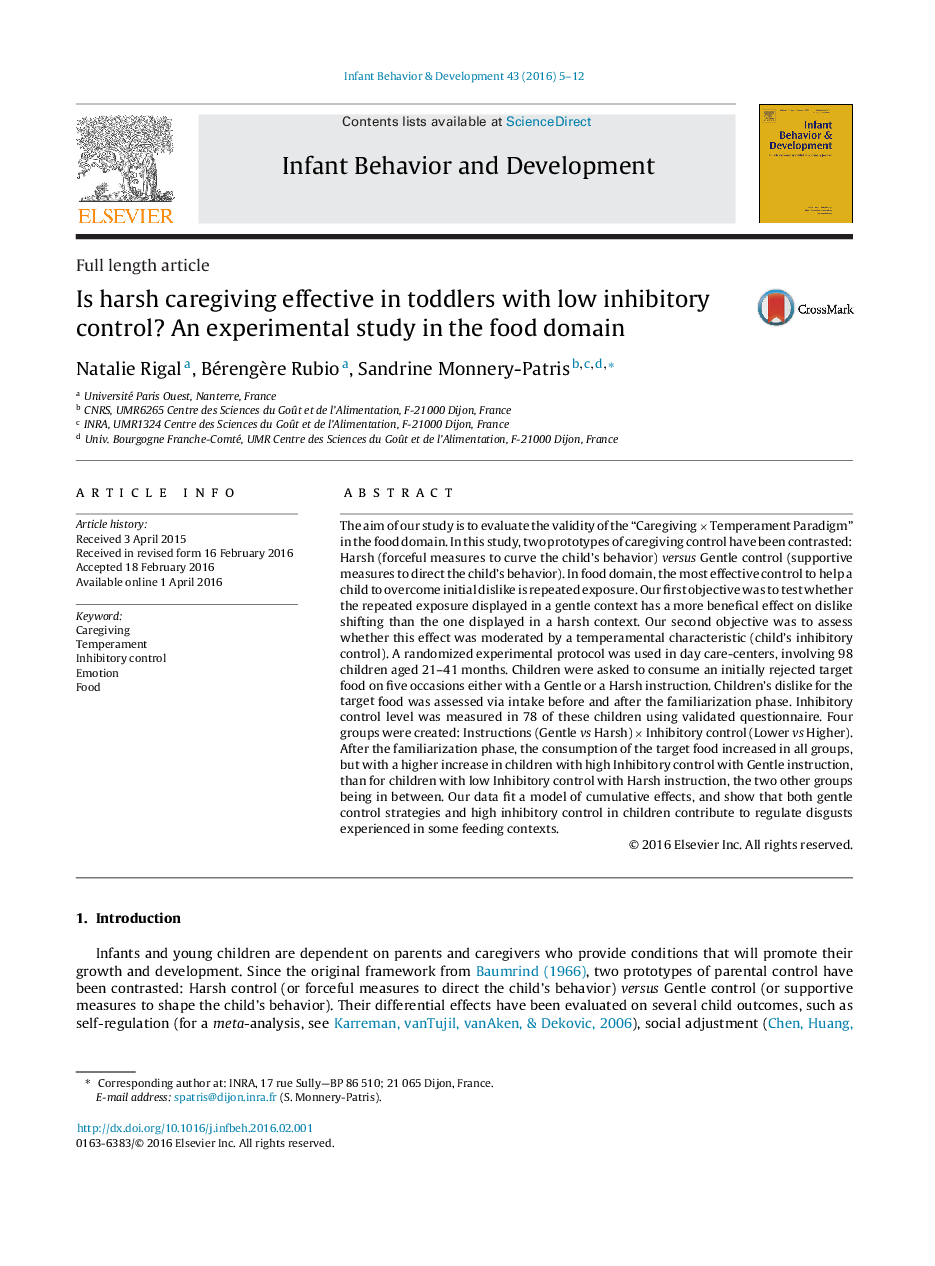| کد مقاله | کد نشریه | سال انتشار | مقاله انگلیسی | نسخه تمام متن |
|---|---|---|---|---|
| 917128 | 1473417 | 2016 | 8 صفحه PDF | دانلود رایگان |
• Two types of caregiving control have been studied: Harsh and Gentle control.
• Both types of control are efficient to reduce toddlers' resistance to taste new foods.
• Caregivers gentle control is more efficient than harsh control in eating context.
• Toddlers' level of inhibitory control mediates the effect of gentle and harsh control.
• In food domain, high inhibitory control and gentle caregiving have cumulative effects.
The aim of our study is to evaluate the validity of the “Caregiving × Temperament Paradigm” in the food domain. In this study, two prototypes of caregiving control have been contrasted: Harsh (forceful measures to curve the child’s behavior) versus Gentle control (supportive measures to direct the child’s behavior). In food domain, the most effective control to help a child to overcome initial dislike is repeated exposure. Our first objective was to test whether the repeated exposure displayed in a gentle context has a more benefical effect on dislike shifting than the one displayed in a harsh context. Our second objective was to assess whether this effect was moderated by a temperamental characteristic (child’s inhibitory control). A randomized experimental protocol was used in day care-centers, involving 98 children aged 21–41 months. Children were asked to consume an initially rejected target food on five occasions either with a Gentle or a Harsh instruction. Children’s dislike for the target food was assessed via intake before and after the familiarization phase. Inhibitory control level was measured in 78 of these children using validated questionnaire. Four groups were created: Instructions (Gentle vs Harsh) × Inhibitory control (Lower vs Higher). After the familiarization phase, the consumption of the target food increased in all groups, but with a higher increase in children with high Inhibitory control with Gentle instruction, than for children with low Inhibitory control with Harsh instruction, the two other groups being in between. Our data fit a model of cumulative effects, and show that both gentle control strategies and high inhibitory control in children contribute to regulate disgusts experienced in some feeding contexts.
Journal: Infant Behavior and Development - Volume 43, May 2016, Pages 5–12
